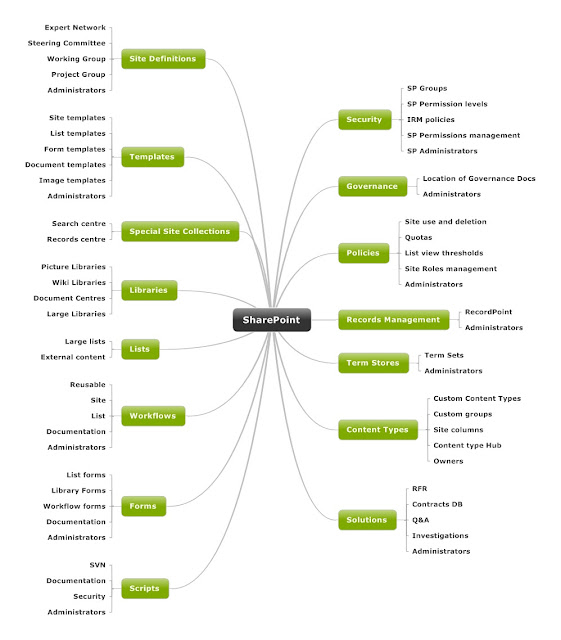To check for big lists (lists with itemcount > 1500):
create table ##Largelists
(
[listID] uniqueidentifier NULL,
[siteID] uniqueidentifier null,
[webid] uniqueidentifier null,
[counts] bigint NULL,
[fullurl] nvarchar(255) NULL,
[dirname] nvarchar(255) null,
[tp_title] nvarchar(255) NULL,
[servername] nvarchar(100) null,
[content_DB] nvarchar(100) null
)
go
CREATE TABLE #DBNamesLL
(
DatabaseName VARCHAR(800),
RecStatus INT Default 0
)
DECLARE @cmdStr NVARCHAR(2000)
DECLARE @dbName VARCHAR(500)
INSERT INTO #DBNamesll (DatabaseName)
SELECT [Name] FROM sys.databases where state_desc = 'online'
ORDER by [Name] ASC
WHILE EXISTS (SELECT * FROM #DBNamesLL
WHERE RecStatus=0)
BEGIN
SELECT TOP 1 @DbName=DatabaseName
FROM #DBNamesLL
WHERE RecStatus=0
SELECT @cmdStr = N'USE ' + quotename(@dbName, '[') + N';'
SELECT @cmdStr = @cmdStr + CHAR(13)+CHAR(10) + 'IF EXISTS(SELECT TABLE_NAME FROM INFORMATION_SCHEMA.TABLES with (NOLOCK) WHERE TABLE_NAME = ''namevaluepair'')'
SELECT @cmdStr = @cmdStr + CHAR(13)+CHAR(10) + 'BEGIN'
SELECT @cmdStr = @cmdStr + CHAR(13)+CHAR(10) + 'INSERT INTO ##largelists'
SELECT @cmdStr = @cmdStr + CHAR(13)+CHAR(10) + 'select a.siteid, a.webid, a.listid, count(a.id) [counts], c.fullurl, a.dirname, b.tp_title,'
SELECT @cmdStr = @cmdStr + CHAR(13)+CHAR(10) + '(@@servername) [servername], (select db_name(dbid) from master..sysprocesses with (NOLOCK) where spid=@@SPID) [Content_DB]'
SELECT @cmdStr = @cmdStr + CHAR(13)+CHAR(10) + 'from alldocs as a with (nolock) inner join'
SELECT @cmdStr = @cmdStr + CHAR(13)+CHAR(10) + 'alllists as b with (nolock) on a.listid=b.tp_id inner join'
SELECT @cmdStr = @cmdStr + CHAR(13)+CHAR(10) + 'webs as c with (nolock) on b.tp_webid=c.id'
SELECT @cmdStr = @cmdStr + CHAR(13)+CHAR(10) + 'group by a.listid, c.fullurl, b.tp_title, a.siteid, a.webid, a.dirname'
SELECT @cmdStr = @cmdStr + CHAR(13)+CHAR(10) + 'HAVING count(a.id) > ''1500'''
SELECT @cmdStr = @cmdStr + CHAR(13)+CHAR(10) + 'END'
EXEC sp_executesql @Cmdstr
UPDATE #DBNamesLL
SET RecStatus=1
WHERE RecStatus=0
AND DatabaseName=@DbName
END
select WebID, SiteID, ListID, tp_Title, DirName, Counts, content_DB, servername from ##largelists order by counts desc
DROP TABLE #DBNamesLL
Drop table ##largelists
Subscribe to:
Post Comments (Atom)
SharePoint Information Architecture Diagram
Here is the template I use for Information Architecture designs. It's built using Mindjet and I flesh the nodes out with the low level d...

-
Introduction This document is intended to highlight possible causes of poor indexing performance on SharePoint 2007 farms as well as p...
-
OPEN FIREWALL PORTS 56737 AND 56738 Submitted Request to Open firewall ports 56737 and 56738 in Approval Environment to enable Office Ser...
-
Using stsadm to stop the osearch service will blat all the indexes: In command prompt try running: taskkill.exe /F /IM mssearch.exe /T ...


No comments:
Post a Comment